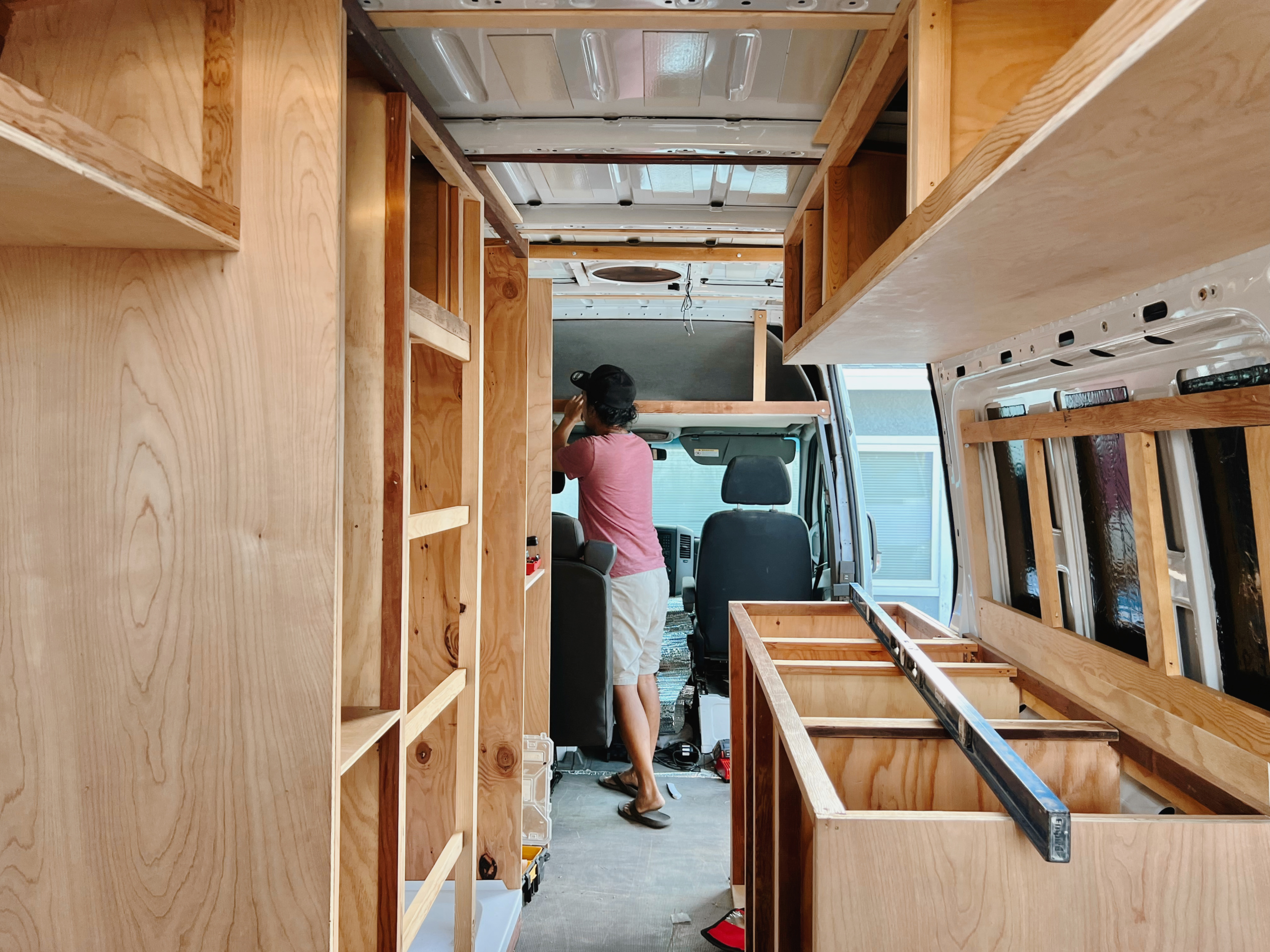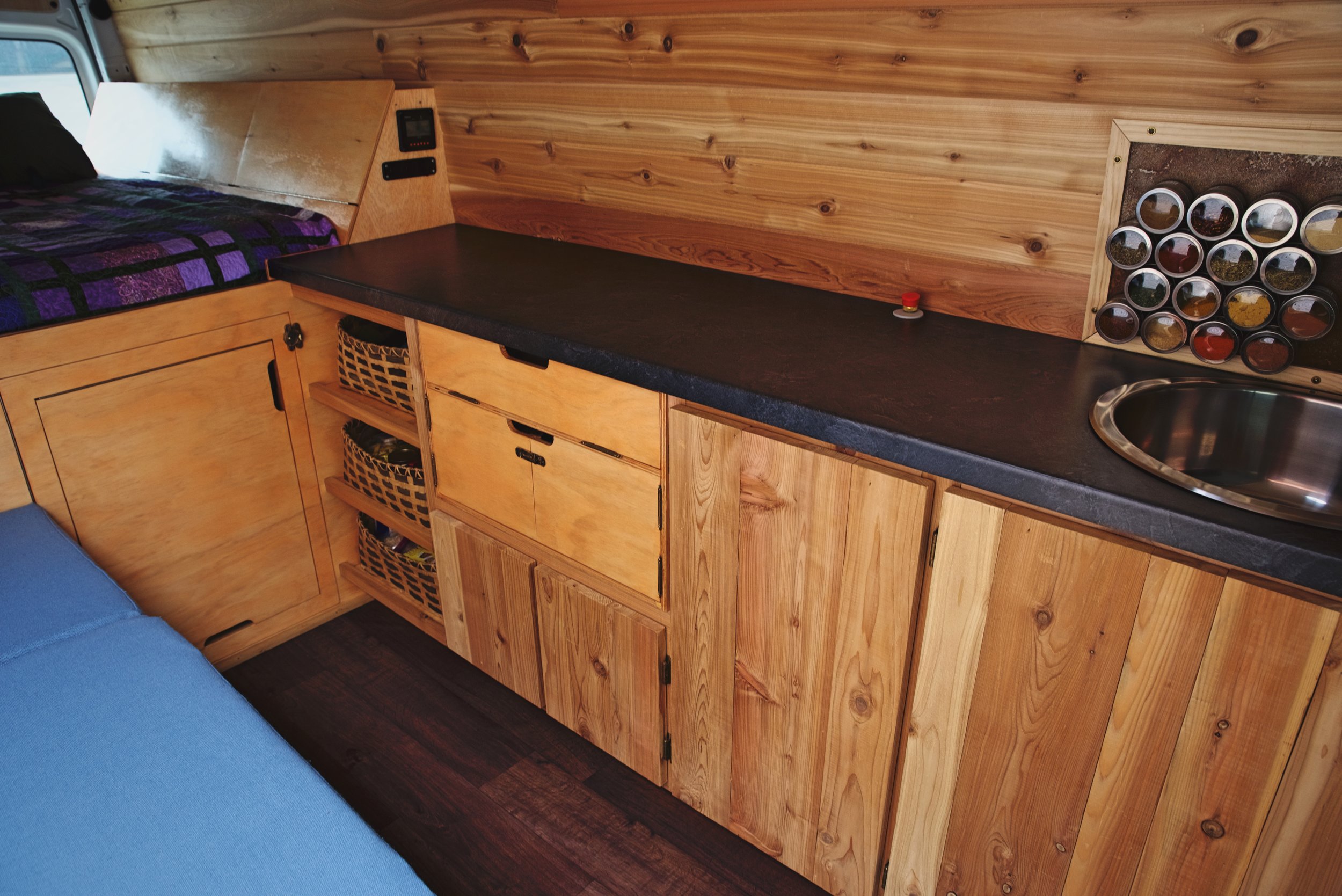Preparing Camper Cabinets for Painting

Yo, painting your camper cabinets? Totally gonna level up your RV’s vibe, but prep is key, fam. Doing it right means a bomb finish that’ll last. We’re talking smooth surfaces, no peeling, and a color that pops. Let’s get this show on the road!
Cleaning and Prepping Camper Cabinets, Best way to paint camper cabinets
Before you even THINK about paint, you gotta get those cabinets squeaky clean. Grime, grease, and old wax are major paint enemies. Think of it like prepping for a killer concert – you wouldn’t show up in ripped jeans, would you? Here’s a breakdown of cleaning solutions and their effectiveness:
| Cleaning Solution | Effectiveness | Pros | Cons |
|---|---|---|---|
| TSP (Trisodium Phosphate) | High | Cuts through grease and grime effectively. | Can be harsh on skin; requires thorough rinsing. |
| Degreaser | Medium-High | Good for removing grease and oil. | May require multiple applications; some have strong odors. |
| Dish Soap and Water | Medium | Gentle, readily available. | May not be effective on stubborn grime. |
| All-Purpose Cleaner | Low-Medium | Convenient for general cleaning. | May not remove all grease and grime. |
After cleaning, sanding is your next move. Light sanding with 120-grit sandpaper smooths the surface and helps the paint adhere better. Focus on removing any imperfections or bumps. Think of it as giving your cabinets a mini-facelift before the big reveal.
Next up: primer. Primer seals the wood, blocks stains, and provides a better surface for the paint to stick to. It’s like the foundation of a dope house – you wouldn’t skip that, right? Use a high-quality primer designed for wood.
Removing Existing Paint or Varnish
Before you can paint, you gotta get rid of that old finish. This part’s crucial, yo. Different methods work best for different materials, so choose wisely.
Here’s the lowdown on your options:
Best way to paint camper cabinets – Choosing the right method depends on the cabinet material and the condition of the existing finish. Some materials are more sensitive than others, so be careful!
- Scraping: Pros: Effective for removing loose paint. Cons: Labor-intensive, can damage the underlying wood.
- Chemical Strippers: Pros: Quickly removes paint and varnish. Cons: Strong fumes, can damage the wood if not used carefully. Requires proper ventilation and safety gear.
- Sanding: Pros: Versatile, can be used on various materials. Cons: Time-consuming, can create dust.
- Heat Gun: Pros: Efficient for removing paint. Cons: Can damage the wood if used incorrectly; requires careful handling to avoid burns.
Applying Wood Filler
Got some chips or gouges in your cabinets? Wood filler’s your best friend. It’ll smooth out those imperfections and create a flawless surface for painting.
First, clean the damaged area. Then, apply the filler using a putty knife, pressing it firmly into the hole. Make sure it’s slightly higher than the surrounding surface because it will shrink as it dries. After it dries (usually a few hours), sand it smooth with fine-grit sandpaper. The dried filler will be a light beige or tan color, similar to the base wood but slightly different. The texture will be smooth and even once sanded.
Imagine the filler like sculpting clay. You can add and shape it to fill any gaps and create a seamless surface. Once it’s dry, it’ll look just like part of the original wood.
Selecting and Applying Paint

Yo, so you’ve prepped your camper cabinets, right? Now it’s time to get down to the nitty-gritty – choosing the right paint and laying it down like a boss. Picking the wrong paint is a total buzzkill, leading to peeling, chipping, and a seriously un-fresh look. Let’s make sure your cabinets are fire.
Choosing the right paint is key to a long-lasting, killer finish. Different paints have different vibes – some are super durable, others are easier to work with, and some boast a seriously glossy sheen. It all depends on what you’re going for and the material of your cabinets.
Paint Type Comparison for Camper Cabinets
This table breaks down the top contenders for camper cabinet paint, highlighting their strengths and weaknesses. Knowing your cabinet material is super important – choosing the wrong paint can lead to a total fail.
| Paint Type | Durability | Finish | Ease of Application | Suitability for Materials |
|---|---|---|---|---|
| Acrylic Latex | Good (especially with a primer) | Matte, Satin, Semi-gloss, Gloss | Easy | Wood, MDF, Laminate (with proper prep) |
| Alkyd (Oil-Based) | Excellent | Satin, Semi-gloss, Gloss | More difficult (requires mineral spirits cleanup) | Wood, Metal (with proper prep) |
| Epoxy | Exceptional | High-gloss | Moderate (requires careful mixing and application) | Metal, Wood (requires thorough prep) |
| Melamine Paint | Good | Various | Easy | Melamine |
Applying Paint to Camper Cabinets: A Step-by-Step Guide
Painting your cabinets like a pro takes some skill, but it’s totally doable. Follow these steps for a flawless finish.
- Prep is Key: Make sure your cabinets are clean, sanded smooth, and primed (especially important for laminate). This is where you avoid future headaches.
- First Coat: Apply a thin, even coat of paint. Don’t overload your brush or roller – thin coats are your friend. Avoid drips and runs.
- Dry Time: Let the first coat dry completely according to the paint manufacturer’s instructions. This usually takes a few hours.
- Second (and Maybe Third) Coat: Apply additional coats as needed for full coverage and a smooth finish. Light coats are better than heavy ones.
- Final Touches: Once completely dry, lightly sand with fine-grit sandpaper to smooth out any imperfections. Then, wipe clean with a tack cloth.
Recommended Painting Tools
Having the right tools is half the battle. These are the essentials for a professional-looking paint job.
- High-quality paint brushes: Choose brushes with synthetic bristles for latex paints and natural bristles for oil-based paints. Different brush sizes are needed for different areas. A 2-inch angled brush is great for edges and details, while a larger roller is perfect for flat surfaces.
- Paint roller and tray: A high-quality roller with a nap suited to your surface will give you a smoother finish. A good paint tray keeps things organized and clean.
- Sandpaper (various grits): Use coarser grits for initial sanding and finer grits for smoothing before painting and after each coat.
- Tack cloth: This removes dust and debris before painting and between coats, preventing imperfections.
- Drop cloths: Protect your workspace from paint splatters.
- Painter’s tape: For clean lines and precise painting, especially around edges and hardware.
Finishing Touches and Maintenance: Best Way To Paint Camper Cabinets
Yo, so you’ve prepped your camper cabinets, slapped on some fresh paint, and now it’s time to lock in that fresh look and keep it looking fly for years to come. We’re talking finishing touches and making sure your hard work doesn’t get chipped, scratched, or faded. Think of this as the final boss battle – you’ve almost won, but you gotta finish strong!
Applying a sealant or clear coat is like adding an invisible force field to your sweet camper cabinets. It protects your paint job from the everyday wear and tear of life on the road – spills, bumps, UV rays from the sun – you name it. Different sealants offer different levels of protection and have unique application methods.
Sealant Types and Application
Choosing the right sealant depends on what you’re looking for. Polyurethane is a popular choice because it’s super durable and offers excellent protection against scratches and UV damage. It’s also water-resistant, which is key for a camper. Applying polyurethane usually involves using a high-quality brush or a spray gun for an even coat. Let it dry completely according to the manufacturer’s instructions – usually a few hours between coats, and a full day before you’re good to go.
Another option is acrylic sealant. It’s easier to work with than polyurethane, cleans up easily with soap and water, and dries faster. However, it might not be as durable or UV resistant as polyurethane, so it might require more frequent reapplication. Application is similar to polyurethane, using a brush or sprayer, but always follow the manufacturer’s directions.
No matter which sealant you choose, remember to work in a well-ventilated area and wear appropriate safety gear, like gloves and a respirator. Thin coats are better than thick ones to avoid drips and runs. Multiple thin coats will give you a better, more durable finish.
Maintaining your freshly painted camper cabinets is key to keeping them looking fresh. Regular dusting with a soft cloth will prevent dirt buildup. For tougher messes, use a damp cloth with a mild soap solution, and always dry thoroughly to avoid water damage. Avoid harsh chemicals or abrasive cleaners. And, if you’re hitting the road, consider covering your cabinets with protective film when not in use to prevent scratches.
